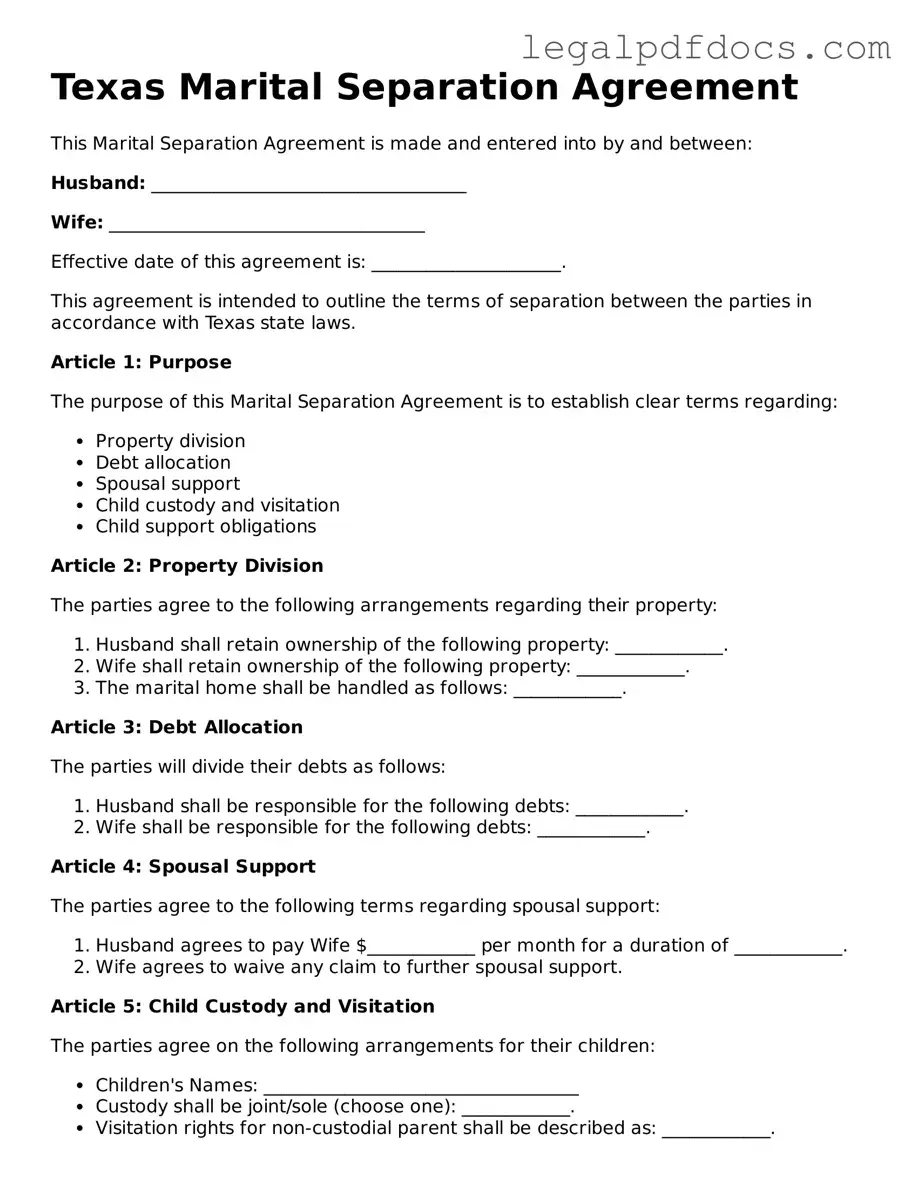Official Marital Separation Agreement Form for Texas
A Texas Marital Separation Agreement form is a legal document that outlines the terms and conditions agreed upon by spouses who are separating but not yet divorced. This agreement can address various issues, including property division, child custody, and support arrangements. By clarifying these matters, couples can create a framework that helps reduce conflict during a challenging time.
If you're considering separation, it's essential to fill out the form to protect your interests. Click the button below to get started.
Open Marital Separation Agreement Editor Here
